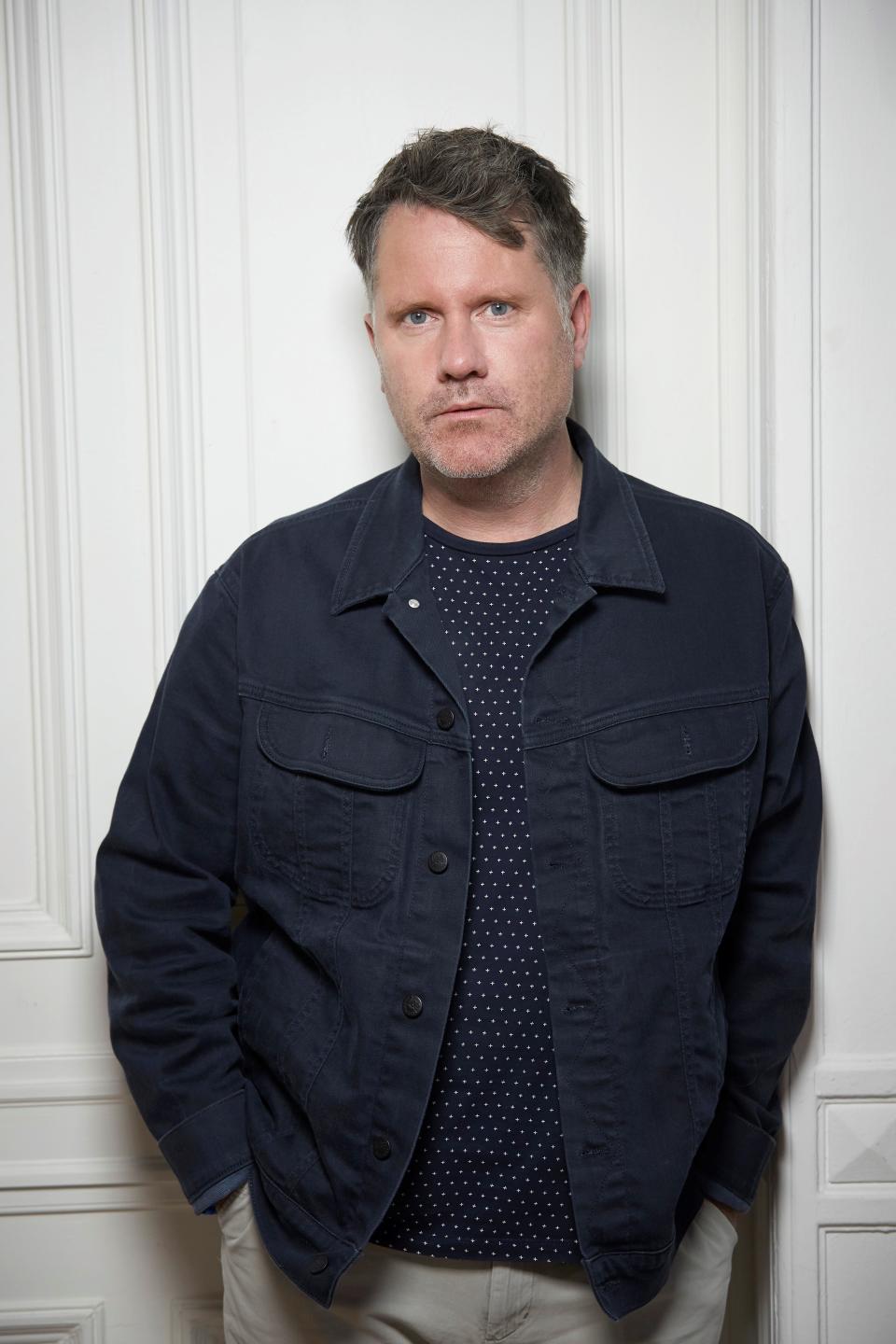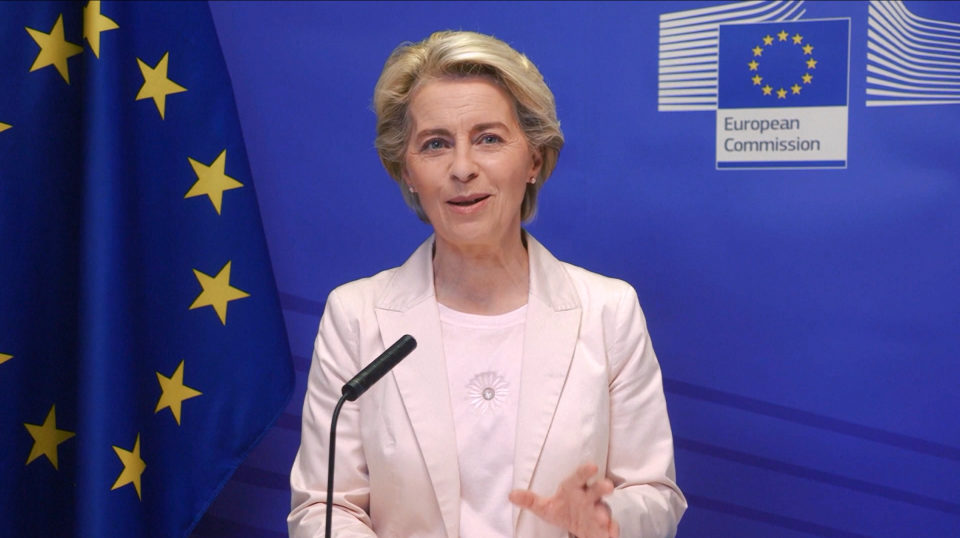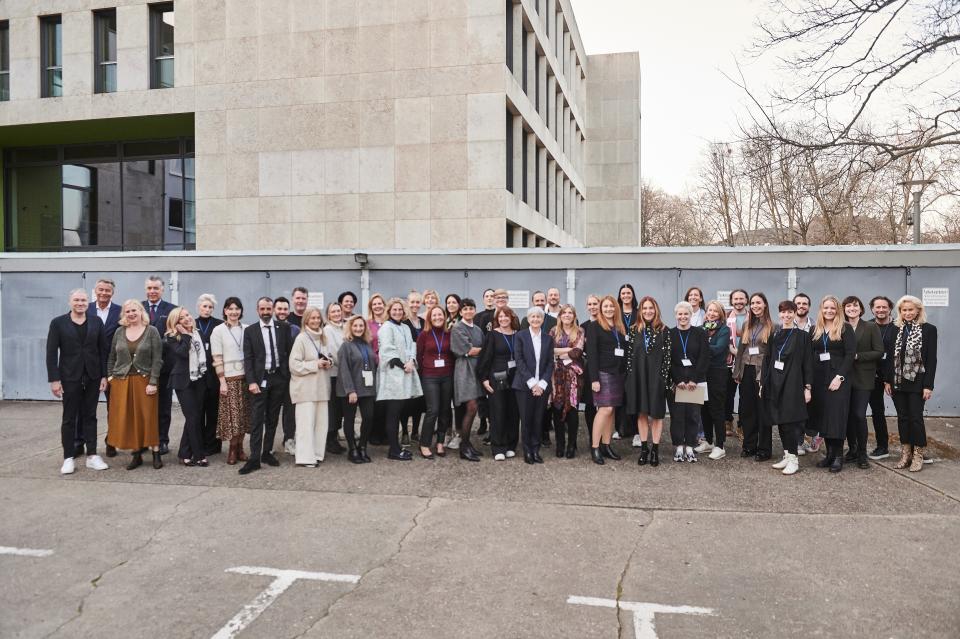EXCLUSIVE: French, Italian, German Fashion Councils, Others Launch European Fashion Alliance

European fashion councils are taking the idea of “more EU” to heart. This week, 21 national and regional fashion councils from 18 countries around the continent are launching what they call the European Fashion Alliance.
The member nations of the European Union boast a wide variety of versions of the traditional fashion council, the bodies typically set up to represent industry interests at the government level, as well as to support initiatives like fashion weeks and promote homegrown talents.
More from WWD
There are the likes of Italy’s Camera Nazionale della Moda Italiana, founded in 1958, with around 150 members today, and France’s Fédération de la Haute Couture et de la Mode, founded in 1973, now with around 100 members. These are large and important arbiters of design and apparel manufacture operating at the heart of the world’s fashion capitals. Then there are also smaller organizations like the Bulgarian Fashion Association, which promotes and networks designers from the Eastern European nation and launched in 2019.
Now all of these bodies are coming together under one umbrella organization, the European Fashion Alliance. And they are taking many a leaf out of the EU’s organizational playbook in Brussels.
The alliance will have a rotating presidency that changes at regular intervals; eventually it will also have minimum standards that members must meet to be able to join, and the body’s funding will work the same way as EU budgets do, with each member paying a share depending on their size and national budget.

FCG/Nela Koenig
The project has been on the drawing board since 2018, Scott Lipinski, the chief executive officer of Fashion Council Germany, explained in an exclusive interview with WWD. His organization has been one of the prime movers behind the new alliance and will hold the first of the rotating presidencies until the end of 2023.
Lipinski explained that the idea came up after an EU-funded initiative called United Fashion, which brought several fashion councils together, along with brands and designers. “I was just so happy to see all the exchange going on,” Lipinski recounted. “One of the objectives of that project was to create a new kind of alliance or [fashion] council on a European basis.”
But four years ago, the initiative didn’t really come together. “It was too heavy,” Lipinski argued. There were complex questions about headquarters, manifestos and whether to include hundreds of brands and designers. “We ended up with a huge monster of an idea,” Lipinski said. “It was overwhelming.”
But there had already been support from the top tiers of European politics for this kind of body. “So we learned from our earlier experience, and then we just picked up the phones and started making calls,” Lipinski said. Fashion Council Germany also hired Elke Timmerman, the Brussels-based project manager behind the United Fashion project.
After a two-day summit of fashion councils in Frankfurt in March this year, Timmerman and Lipinski have what they call the Frankfurt Agreement, the founding document for the European Fashion Alliance. The 31 organizations who attended agreed that a smaller alliance that could evolve more organically would be a better way to begin.
Although only 21 of the original 31 attendees are currently members, other organizations are also willing and more are likely to join once bureaucratic hurdles are overcome, Timmerman explained in an email.
“We are very happy to be part of the European Fashion Alliance,” Pierre-François Le Louët, chairman of the Fédération Française du Prêt à Porter Féminin, said in a statement on the launch. “I am sure together we will be able to leverage the influence of our industry all over the world and promote sustainable and inclusive actions.”

Despite the fact that an official manifesto is yet to come, several core aims are already apparent. One of the alliance’s objectives is to represent the European fashion industry at the EU government level.
Ursula von der Leyen, president of the European Commission, the EU’s decision-making body, held a keynote speech at last summer’s New Bauhaus conference in Frankfurt, where a fashion alliance was discussed again.
“She said that what we needed was one voice from the European fashion industry,” Lipinski noted. “And then Dr. Christian Ehler [member of the European Parliament’s Committee on Culture and Education] has also been something of a driving force. He told us, ‘We don’t know what you want because we don’t have one organization that we can approach to discuss policy. So please create this network’.”
The apparel industry anticipates more policies and laws relating to the fashion and textile sectors over the coming year. The alliance should have a seat at the table when decisions are being made and eventually plans to present unified industry positions on all-important legislative topics like sustainability.
“We all know that we are one of the largest polluters of earth,” Lipinski conceded. “So there’s an urgency to make real changes there.”
Additionally, more EU funding than ever is going into the continent’s creative industries and the alliance will likely have the opportunity to advise on where money could best be spent. In the latest six-year EU budget for 2021 to 2027, funding for culture and the creative industries increased by 50 percent over the last six-year budget and now totals 2.44 billion euros.
Besides political advocacy, the European Fashion Alliance is also about transnational networking. The body plans to meet around certain subjects such as, for example, craft, innovation, best practices and national specializations, as well as to encourage cross-border projects and more networking.
There’s already been some success here. Even at the first few meetings, smaller European fashion councils were being inspired by the bigger ones, Lipinski noticed.
More than two years ago, Fashion Council Germany commissioned a report on the relevance and size of the German apparel industry so they could take that to their own government to impress upon them that the sector was worth paying attention to.
“Some of the smaller [fashion councils] are also demanding to be heard,” Lipinski said. “So that was maybe one of the first learnings that a couple of these countries had. They said, ‘OK, tell us how you did that? Because we too want to be heard by our government to make them understand how important our sector is’.”

EFA/Frank Baumhammel
Asked whether he worries that there might be infighting and perhaps even competition between alliance members — say, because one country wants to hold a fashion week at the same time as another — Lipinski dismissed the idea.
“Isn’t that a bit of an old myth?” he asked. “I mean, I sat down with Copenhagen Fashion Week the other day and said let’s do something together. And the French and Italians are friends; they exchange ideas all the time and are in constant conversation. It’s not about egos, it’s about getting things done.”
The next meeting that involves all members will be a digital summit in July and then an in-person one in October. But it’s important to manage expectations, Lipinski said. The European Fashion Alliance has only just been launched, he cautioned, and results might not be seen until the beginning of next year, at the earliest.
In the distant future, the German-Scottish CEO’s main desire is that the alliance will have made a positive difference.
“We might not be giving it [any new EU policy or law] a name. We might not be the ones enforcing it either. But if we could say that we were the ones behind certain, valuable policies that made our industry more futureproof, I would be proud,” Lipinski concluded.
Sign up for WWD's Newsletter. For the latest news, follow us on Twitter, Facebook, and Instagram.

